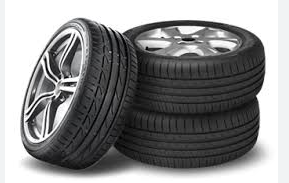
Tire Shopping 101: Your Ultimate Buyer’s Guide
Buying new wheels can be quite a daunting task, particularly when you’re unfamiliar with every one of the specifications necessary to make a good choice. Knowing tire specifications is important in getting the proper wheels that will assist you obtain the best functionality through your car. This guide is an important Deck (Däck) instrument for anyone thinking about buying new car tires. It includes all the details you must make a knowledgeable decision.
Tire Sizing: By far the most essential specifications you must know before buying your auto tires is definitely the wheel dimensions. Your tire dimensions spec is normally located on the sidewall of your own old tires. The three amounts that determine the wheel sizing will be the width, aspect rate, and size. These specifications let you know how large your wheel is, how tall it is actually, and what dimension wheel it fits on. Ensure the new wheel size matches those amounts. Understand that fitted your car or truck with the incorrect dimension wheel can severely have an effect on its overall performance, energy usage, and security.
Tread Use: The tread wear status is really a attribute that suggests how long the wheel may last. This status is represented with a amount from 100-800. Tires having a greater variety have greater sturdiness and might give a lot more mileage than tires using a lower variety. A tread wear status of 500, for example, equates to 50,000 miles of usage under ideal circumstances. A tire with increased toughness might cost more, nevertheless it will save you money in the end.
Traction: One more important feature of auto tires you shouldn’t disregard may be the Traction rating. This status indicates the tire’s capacity to grip the path surface area under drenched problems. Greater grades suggest that the tire is more unlikely to skid or hydroplane on drenched roads, offering much better control and basic safety. Traction is rated AA, A, B, or C, with AA ranked wheels offering the very best grasp in moist conditions.
Weight Ability: Every wheel includes a weight index, showing the maximum bodyweight the wheel can bear. Effectively loaded tires boost handling and provide greater balance on the road. It’s important to estimate your vehicle’s body weight, consisting of the load in the car tires, travellers, cargo, along with the vehicle’s excess weight, to choose the correct fill index status.
Rate Ranking: The Pace Score lets you know the utmost pace your tires are equipped for before it starts to develop issues. Ratings vary from L, which is the same as 75 miles per hour, to Y, which may handle rates of speed of up to 186 miles per hour. Be sure that the pace score of the new tire are at least up to those of your older auto tires. If you’re a high-speed motorist, bear in mind only wheels using a better pace ranking compared to your car’s maker recommendations will not likely void your car’s guarantee.
To put it briefly:
Comprehending wheel specs is critical to create an educated determination when selecting new auto tires. Knowing the main functions we defined above – wheel dimensions, tread dress in, traction, load capability, and speed score – can help you get the greatest efficiency and long life from your new car tires, get better management and protection on the road, and cut costs in the long run. Make sure to meet with a tire expert if you have any queries or problems that need clarification prior to making your own preference. That said, you ought to be self-confident and feel safe making tire transactions that maximize your driving a vehicle and car efficiency.